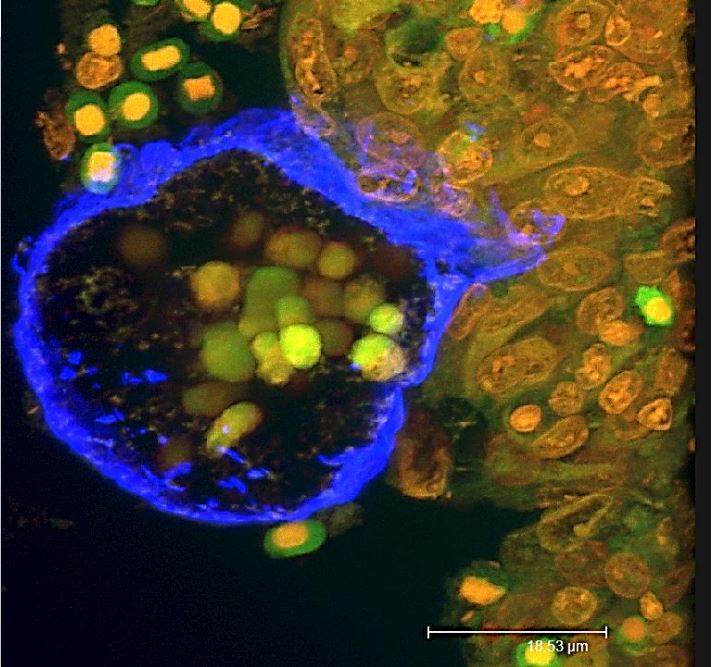Michela Massimo from the University of Udine (Italy) visited the Institute of Aquaculture in 2018 to work with Professor James Bron and Jacquie Ireland on this parasitic dinogflagellate.

The research investigated the defence mechanisms adopted by European sea bass (ESB) against the protozoan parasite Amyloodinium ocellatum (AO). To achieve this, an expression fluorescent in situ hybridization (FISH) protocol was developed at the Institute of Aquaculture of the University of Stirling. Two riboprobes were designed for Chemokine CC1 and Hepcidin2 transcripts. To support FISH results, qPCR was previously performed to evaluate the expression levels of the two transcripts in ESB gill tissue from uninfected and infected fish. mRNA in situ hybridization contributed to localise, in the gills, the tissue-spatial distribution of leukocytes expressing Chemokine CC1 emphasising the different localisation of the transcript between control and infected fish and, in the latter, highlighting the host-parasite interactions. Instead, no signal was observed on any of the gill slides incubated with Hepcidin2 probe.
In addition, confocal investigations were carried out to deepen the understanding on the host parasite relationship. Gill tissue samples from AO infected ESB were stained with different fluorescent stains (Calcofluor white; Propidium iodide; DAPI; TRITC-Phalloidin; WGA and WGA+Rhodamine lectins) and visualized under a confocal laser scanning microscope. The objective of the study was to better detail the anatomy of A. ocellatum trophonts (the parasitic stage of the protozoan) through an alternative approach.
Michela said of she was very satisfied with her TNA experience “At the Institute of Aquaculture, the intellectual environment was extremely stimulating, scientific and technical support were excellent and all the laboratories were well-organised. I could learn very interesting and innovative techniques that helped me in better understanding the mechanisms underlying Amyloodinium ocellatum and host relationship, which is the central core of my PhD thesis. Therefore, the results obtained by this project contributed to implement my doctoral thesis.”
Note: Text for this post was taken from the AQUAEXCEL2020 website. A poster incorporating the work is available from ResearchGate
